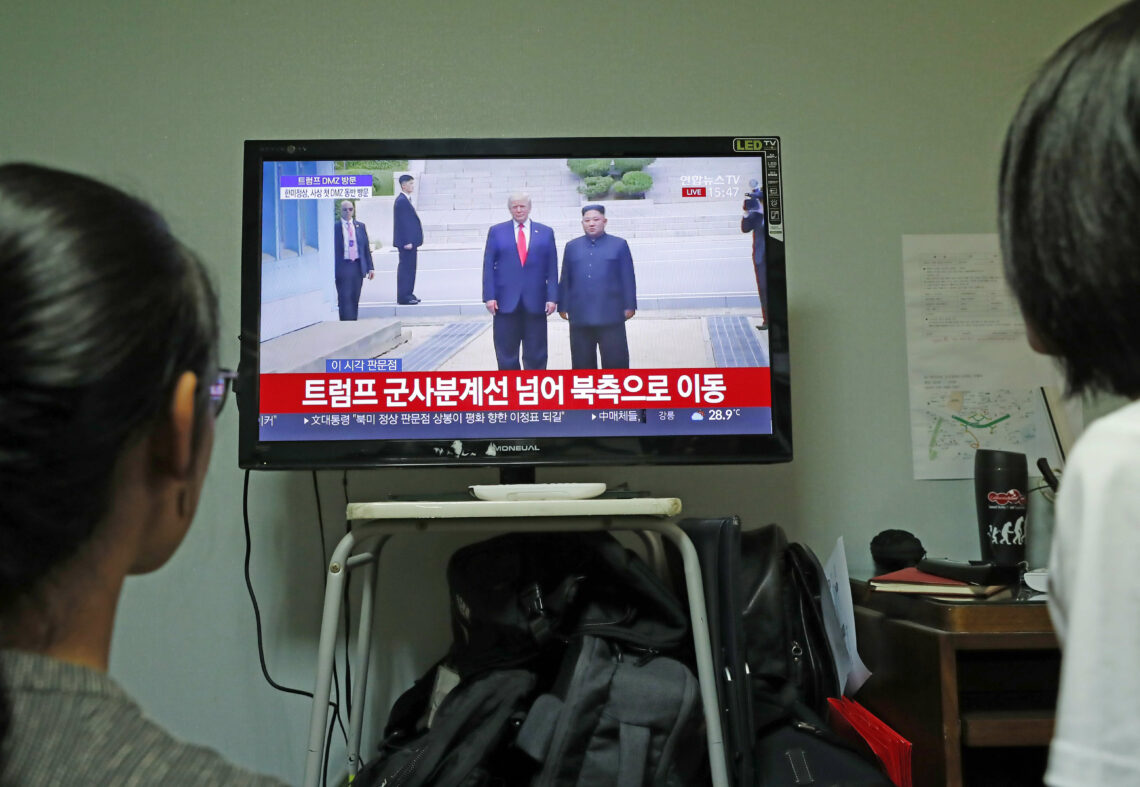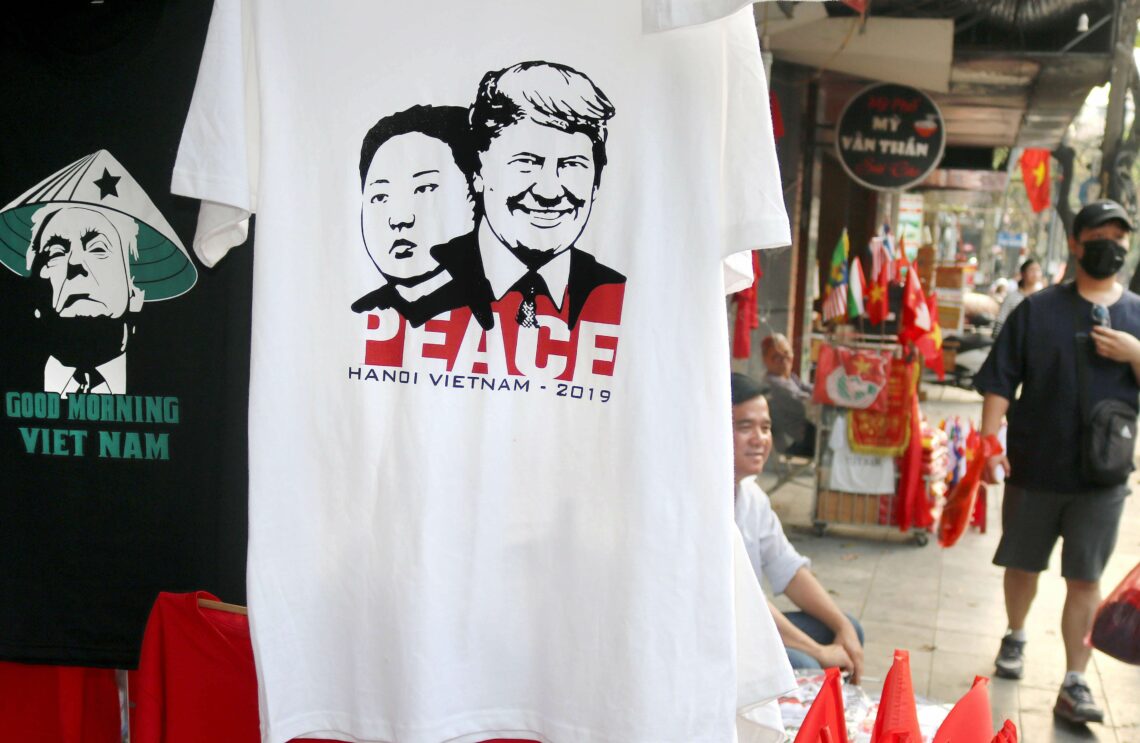U.S. and North Korea: Restart of talks, but to what end?
The U.S. had shown a willingness to return to the negotiations with North Korea. Pyongyang, however, continues to test the American commitment to a deal. In October, a technical negotiation between the two sides ended without progress. The North Korean strategy may be to pressure the U.S. into accepting a deal on less demanding terms.

In a nutshell
- The fate of a new round of negotiations between U.S. and North Korean leaders looks uncertain
- Most vocal opponents of a deal with North Korea have left the Trump administration, but dynamics of the talks are unchanged
- Negotiations are unlikely to lead to denuclearization in the short term
The U.S. strategy for dealing with Pyongyang has been to mount a “pressure and sanction” campaign to punish the regime while offering talks to normalize relations and denuclearize the Democratic People’s Republic of Korea (DPRK). In February 2019, American and North Korean leaders met for a summit in Hanoi, Vietnam, but failed to make any headway. While North Korea came forth with low-level provocations and complaints, the U.S. continued to signal that the diplomatic option was still on the table. Substantive negotiations have resumed, but there are no signs that North Korea is willing to commit to full denuclearization, as the U.S. had hoped.
New strategy
At the Hanoi Summit, the North Koreans tested the hypothesis that a deal could be reached by getting U.S. President Donald Trump to the table and bypassing his advisors, cabinet officials, and negotiating team – thus allowing the DPRK side to strike an agreement that would not require an upfront commitment on denuclearization. They walked away empty-handed.
For a time, it appeared as if North Korea had recalibrated. Changes were made in their negotiating team. Pyongyang conducted a series of provocative missile and weapons tests, though they remained below the threshold of the long-range ballistic missile and nuclear tests they conducted in 2017, before they entered into serious negotiations with the U.S. The DPRK also continued to criticize American and South Korean officials and policy, but it did not evade prospects for future negotiations. Many assumed North Koreans were biding their time until the national U.S. elections in 2020, waiting to see with whom they would have to negotiate.
Many assumed North Koreans were biding their time until the national U.S. elections.
President Trump, for his part, would have clearly liked to make a deal before the presidential elections to burnish his status as a statesman, but the U.S. sent no signals that he was desperate. The American president even declared that the conditions were not right for another summit in the near term.
At this point, Mr. Trump still appears poised for a second term in the White House. It is unlikely that a deal or lack thereof would significantly affect his reelection chances. Only a significant armed confrontation or dramatic crisis would impact what voters decide next November.
No opponents
There is some speculation that talks could be jump-started by the removal of National Security Advisor John Bolton because the latter was wary of negotiations and concessions to North Korea, but this seems unlikely. According to reports, Mr. Bolton and Mr. Trump had been at odds for months, especially over North Korea. If the president wanted to move his policy forward, he didn’t need to remove the national security advisor. The timing of Mr. Bolton’s departure is probably a coincidence, not the product of cause and effect.

It is unclear what was needed to bring the two sides back to the table – but something has. While the U.S. could have strung out the negotiations until after the elections, it has been hinting that talks would resume earlier. Washington believed Pyongyang was ready to come back to the table. This assumption proved correct. On the other hand, the rebuff from the North Koreans at the meeting in Sweden caught the U.S. by surprise.
Pending changes in the State Department are unlikely to impact Washington’s stance.
Some believe that the U.S. framework has moved away from complete denuclearization before normalization and a peace treaty, which is perhaps the case. But the North Korean side tested that theory – and concluded that the U.S. has not softened its negotiating position.
Pending changes in the State Department are unlikely to impact Washington’s stance dramatically. The U.S. negotiations are led by Steve Beigen, who is thought to be the next deputy secretary. If he is formally nominated, Mr. Beigen’s confirmation process could move quickly through the Senate, but it is expected that he will retain his role as chief of the negotiating team.
Many of those most skeptical of a deal with North Korea have left the administration, including Ambassador Bolton as well as Assistant Secretary of State for Arms Control, Verification, and Compliance Yleem Poblete. There are no remaining influential voices that could push back against a renewed effort to reach an agreement. Yet, their departure does not seem to have greatly impacted the negotiating process.
Scenarios
South Korea anxiously awaits a resolution. The government has invested significant political capital in pressing the DPRK and the U.S. to move forward. South Korean President Moon Jae-in has been struggling with approval ratings and many are disappointed in the state of the economy. A successful negotiation would be a boon to his administration.
Japan remains wary but generally willing to follow the U.S. as long as any deal covers medium-range ballistic missiles that could reach Japanese soil. Given the poor state of relations between South Korea and Japan at the moment, the last thing Tokyo would want is to be seen as spoiling a nuclear deal between the U.S. and North Korea.
Meanwhile, China has been mostly on the sidelines. Beijing is preoccupied with other issues: unrest in Hong Kong, the interminable trade dispute with the U.S., growing resentment toward the Belt and Road Initiative and a slowing economy.
Another pertinent factor for the U.S. is the ongoing confrontation with Iran. The American administration believes that a substantial deal with the DPRK would put additional pressure on Iran to come back to the table. The North Korea negotiations will be used as a template for dealing with Tehran.
The most likely scenario is that a deal will remain out of reach before the end of President Trump’s first term. Despite the rebuffs in Hanoi and their frustration with the latest round of negotiating in Sweden, the North Koreans still seem intent on getting Washington to compromise on its denuclearization plan for the Korean Peninsula. They may also decide to wait out the results of the election. Regardless, what is unlikely is that the deal will deliver full denuclearization as a first step.
If something affects the likeliness of a second Trump term, such as the ongoing impeachment inquiry by the U.S. Congress, the North Koreans may be further inclined to press the pause button. Alternatively, they could double down on concessions, hoping the president will put more on the table during his reelection campaign, but at the moment, this scenario is less probable.







